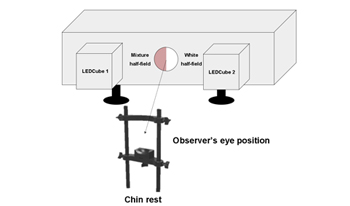
The visual changes caused by aging have an important effect on human vision. In this study, a series of color matching experiments were conducted to explore the differences in color matching results between observers of different age groups. The experiments were conducted using a visual trichromator, which could be illuminated by 18 LEDs with different peak wavelengths as light sources that formed 11 different triplets of RGB primaries. The matched and reference fields observed by the observers in the experiment were equally sized semicircular fields that together formed a circular field. A fixed triplet of RGB primaries produced the white reference field on the right side. It was matched on the left-side by adjusting the primary intensities of each of the 11 triplets of RGB primaries. The white reference stimulus was fixed at 120 𝑐𝑐𝑐𝑐/𝑚𝑚2 luminance level. One hundred Chinese observers with normal colour vision were divided by decades into 7 groups from 10 to 80 years old. The matches were analysed to estimate their cone spectral sensitivities and photopigment, macular and lens optical densities. The experimental results show relatively little variability with age, except as expected increases in lens density with age, and older observers showed more inter-observer variability. The analysis suggests that some of the mean colour matching parameters assumed by the CIE, such as the macular pigment optical density, do not apply for these observers.